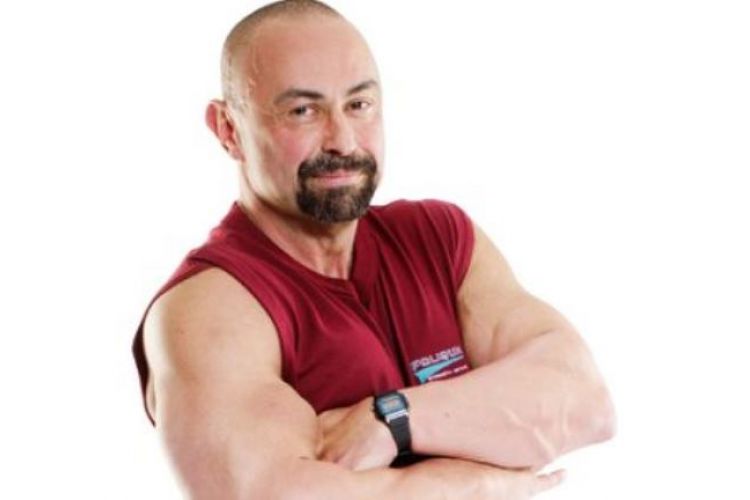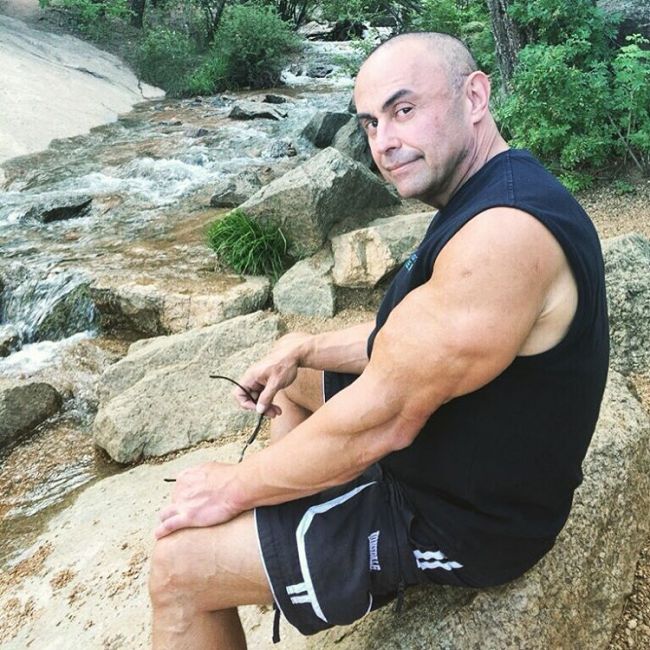Who is Charles Poliquin?
Charles Poliquin, a native of Canada, is a well-known strength trainer.
Ben Pakulski, Gary Roberts, Chris Thorpe, Michelle Freeman, and Nanceen Perry are just a few of the athletes he has trained.
In addition to his success as a personal trainer, Charles has written 8 books and more than 600 articles that have been published.
Short Career of Charles Poliquin
Charles Poliquin has a path into bodybuilding that began when he was 14 years old and his karate sensei introduced him to weight training.
Charles started dedicating all of his time and energy to bodybuilding after that.
With the passage of time and the endorsements of several clients he had coached throughout his three-decade career, he became an authority in the fields of nutrition and strength training.
Body Measurements of Charles Poliquin
| Full Name: | Charles Poliquin |
| DATE OF BIRTH: | 1961 |
| ERA: | 1980, 1990, 2000, and 2010 |
| PROFESSION: | Strength coach |
| NATIONALITY: | Canadian, American |
| WEIGHT: | 175 to 185 pounds (79.4 to 83.9 kg) |
| HEIGHT: | 5’9″ (175cm) |
Accomplishments
- Author – 8 Books
- Columnist – 600+ articles
- Strength Coach
Charles’ Selected List of Trainees
- David Boston, NFL Pro Bowl wide receiver
- Al MacInnis, Retired NHL defenseman, Norris Trophy winner
- Joe Nieuwendyk, Florida Panthers, Conn Smythe Trophy winner, Stanley Cup winner
- Chris Pronger, Anaheim Ducks, Stanley Cup winner; winner of Norris and Hart Trophies
- Canadian short-track speedskating team
- Dwight Phillips, Olympic Gold Medalist long jumper
- Nancy Perry, World Record Holder 4 x 200 meter
- Michelle Freeman, former number 1 ranked hurdler in the World.
- Chris Thorpe, Olympic Silver & Bronze Medalist, Double’s Luge
- Adam Nelson, World Champion & 2x Olympic Silver Medalist, Shot Put
- Ben Pakulski, Top Canadian Bodybuilder and Trainer
- Gary Roberts, NHL player
Biography
Karate and Weight Training
Charles Poliquin, who was born and reared in Ottawa, Ontario, was a legendary karate student in his youth. He earned his black belt in martial arts at age 14, making him the second-youngest black belt holder in Canada.
Charles was the only student in attendance at one of his training sessions that day; others chose to stay home owing to the inclement weather.
As a result, according to Charles, his sensei decided they would train with weights rather than practice karate.
“My sensei Web Corcoran couldn’t envision teaching karate to a class of one, so we spent the time lifting weights,” he said. Charles’ adventure into bodybuilding started here.
Getting into the Fitness Industry
Charles started pursuing a full-time career in bodybuilding as soon as he realized it was his interest. A few years later, he received a bachelor’s degree in kinesiology.
While doing so, he started coaching a variety of players and gained knowledge in the process.
“It all started when a volleyball player for the National Team noticed me working out in the university’s weight room and requested assistance.
He tested for a few months under my direction as the team’s strong player, which prompted me to coach one of his teammates, who then brought me another. What follows is history. Chuck Poliquin
Charles started extending his impact in the bodybuilding industry after obtaining his master’s in physiology.
He began writing articles on the science of strength and conditioning in 1993 and quickly rose to the position of a respected columnist.
Charles founded his Performance Center after emigrating to the US from Canada in the late 1990s and started certifying instructors in his PICP program there.
Icon of Bodybuilding
By the year 2000, Charles was a bodybuilding legend. He had coached some of the best Olympians and professional athletes in the world during his illustrious career as a personal trainer.
This comprised elite Canadian bodybuilders and coaches Ben Pakulski and Adam Nelson, a world champion and two-time Olympic silver medallist.
He also had books published, and they were translated into 12 different tongues.
Charles continues to share useful knowledge on training, nutrition, and performance through his websites, and he shows no signs of slowing down.
Training
Unusual Training Method
To get the best results, Charles uses over 16 different training plans in both his exercises and those of his clients.
Depending on the development of his strength and size, he alternates between both training regimens every three to four weeks.
Charles explains the value of switching up workouts in the following way: “We have to try new movements or try alternative ways of completing the same old movements.
Variety is essential for success in both bodybuilding and strength training, not just as the flavor of life.
HIIT, the Best Cardio Method
Charles Poliquin likes HIIT over traditional cardio for fat loss. He performs high-intensity intervals of 40 to 120 seconds, with a minute of rest in between.
His two HIIT training sessions each week total about 40 minutes.
Warm-Up
Charles makes sure to thoroughly warm up before he begins his workout. By doing this, Ho not only prevents damage to his joints and muscles but also enhances the functionality of all of his muscles.
He thinks the ideal temperature for training is around 20 degrees Celsius, and he prefers to do his workouts in this setting.
Charles will dress in several layers if he is in a cooler area, gradually removing them as he warms up.
Charles asserts that a good warm-up requires both a big weight and a range of motion. For instance, Charles might warm up with many sets of low-rep squats before starting his usual “working sets” if he is working on his legs.
The complexity of the exercise itself determines how many warm-up sets he uses, therefore harder exercises call for more warm-up sets. Below is a sample of one of his warm-up exercises.
Typical Warm-Up
Standing Calf Raises
- 3 reps at 40 lbs, rest 10 seconds
- 3 reps at 60 lbs, rest 10 seconds
- 2 reps at 80 lbs, rest 1 minute
- Work sets: 3 sets of 20 at 100 lbs
Creating abs
Charles avoids hitting the abs directly because he thinks they have little room for strength gains, especially when compared to other muscles in the body.
Therefore, he asserts that performing hard squats and deadlifts is the ideal technique to develop a sculpted midsection.
Developing Triceps
Triceps pushdowns are a common exercise among athletes, but according to Charles, they’re not ideal for building large triceps. He suggests these moves in its place;
- Parallel dips
- Close-grip bench press
- Decline close grip bench press
- Seated EZ-bar French press
- Decline dumbbell triceps extensions
Growing “Stubborn” Calves: A Guide
Throughout his coaching experience, Charles has discovered that a mix of high-volume and high-frequency workouts produces the best results for his customers’ calves.
This specifically implies that he will have his clients work out their calves twice a week, one with heavy weight and the other with an incredibly high volume (250–510 repetitions total).
With this routine, “I’ve known folks to gain between 5/8 of an inch and a full inch in as little as 30 days.”
Charles like the donkey calf raises the most among the exercises.
Getting Off the Plateau
Charles loves to include the same exercise twice in his exercises to overcome plateaus in his strength and size “gains”.
Charles will perform the exercise at the start and the conclusion of his workout, for instance, if he wants to enhance his squat.
Nutrition
Basic Nutrition
Charles consumes entire foods as well as vitamins, minerals, fish oil, BCAAs, and zinc in his diet.
He favors a low-carb, high-fat, and high-protein diet because he thinks fat is a more reliable and superior fuel source for the body than carbs.
His only large carbohydrate intake occurs right after a workout when his muscular glycogen stores are completely exhausted.
Charles needs between 1.6 and 2.4 grams of protein per kilogram of body weight each day to gain muscle.
Meat and Nuts Breakfast
Charles makes sure to provide his body with the optimum nutrients once he wakes up since he believes that breakfast is the most crucial meal of the day.
He typically has meat and nuts for breakfast. He claims that because they boost the creation of neurotransmitters like acetylcholine and dopamine, these foods are the healthiest for the brain.
This is how his about six distinct varieties of this type of breakfast look;
Meat and Nuts Breakfast Day 1
- 1-2 Buffalo meat patties
- 1 handful of macadamia nuts
Meat and Nuts Breakfast Day 2
- 1 large venison steak
- 1 handful of cashew nuts
Meat and Nuts Breakfast Day 3
- 1-2 Lean turkey burgers
- 1 handful of almonds
Meat and Nuts Breakfast Day 4
- 1-2 lean ground beef patties
- 1 handful of brazil nuts
Meat and Nuts Breakfast Day 5
- 1-2 chicken breasts
- 1 handful of hazelnuts
Meat and Nuts Breakfast Day 6
- 8-10 gluten-free chicken sausages
- 1 handful of pistachios
What to Eat, and What to Avoid Before Training
According to Charles, these are the foods and drinks to avoid before training;
- Fructose and drinks that contain a lot of sugar
- Fermented foods
- Slower-digesting protein sources such as beans and milk
- Huge amounts of stimulants (caffeine)
Here are the foods that Charles believes are great for pre-workout;
- Lean meat and fish
- Coconut Oil
- Omega-3 Fatty Acids
- Nuts
- Vegetables
- Low-Fructose Fruit
How can Charles Poliquin teach us something?
Charles has had a long and fruitful career. He has changed people’s lives and physical appearances because of his love and devotion to bodybuilding.
He has shown us that success may be attained by assisting others in realizing their objectives in addition to focusing on one’s ambitions.
Therefore, one way to succeed in life, like Charles Poliquin, is to stay committed to your journey and help others along the way.

